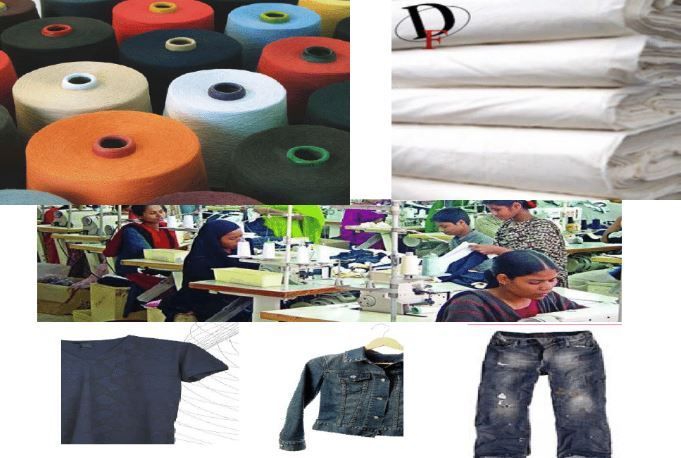History of the Textile Industry in Bangladesh
Traditionally, artisans working in small groups, in what are often referred to as cottage industries, produced most of the textile in the sub-continent. There were many such artisans in the area that was to become Bangladesh. In fact, from prehistoric times until the Industrial Revolution in the eighteenth century, East Bengal was self-sufficient in textiles5. Its people produced Muslin, Jamdani, and various cotton and silk fabrics. These were all well regarded even beyond the region as they were manufactured by very skilled craftsmen. The material produced by the artisans of Bengal started facing vigorous competition beginning in the eighteenth century after the growth of mechanized textile mills in the English Midlands. This eventually led to a great decline in the number of Bengali workers skilled enough to produce such high quality fabrics. According to popularly held beliefs, as the region's spinners and weavers meant competition for their emerging textile industry, the British imperialists responded by trying to force the artisans to stop production. They were said to have sometimes used methods as harsh as cutting off the thumbs of the craftsmen sothey would never be able to spin or weave again. However, as was the case with the traditional handloom fabrics, indigo dye production also gradually declined. The problems of the indigo industry were principally a result of two factors. First, because indigo was a cash crop, the British administrators in this part of the empire forced farmers to grow the indigo plant in order to increase the administrators' profits. Unfortunately, the indigo plant is nitrogen depleting and thus exhausted the soil very quickly. Another reason for indigo's gradual disappearance as a dye stuff was the unpredictable nature of the plant. Sometimes one farmer would have a good harvest, while his neighbor would not be able to produce anything. The combination of poor yields and the unpredictability of the crop gradually led farmers to cease growing the plant and moving on to other, more profitable crops. The fabric produced and dyed in British factories flooded the Indian markets. In time, its importation became one of the points of contention in the growing independence movement of the sub-continent. As separation from Great Britain was becoming a foreseeable reality and local production again profitable, the textile industry was reorganized as new methods of production were adopted. Water, a necessity for the chemical processes involved in processing the modern dyes now used, was abundant in East Bengal. This contributed to the establishment of mechanized textile factories in the area establishment of mechanized textile factories in the area. However, after 1947 and the partition of East and West Pakistan from India, most of the capital and resources of Pakistan came under the control of West Pakistanis. The textile industry thus stagnated in East Pakistan as momentum for development shifted from the eastern part of the country to the west. The west also grew more cotton than the east, which was used as a plea for developing the industry in the west instead of in the east. The majority of all industries in the east were also owned by West Pakistani industrialists. When Bangladesh gained its independence from Pakistan in 1971, the new government nationalized the textile industry, as it did with many other businesses in which West Pakistanis had been the principal owners. Although there were some Bangladeshi industrialists, they did not form a large or politically powerful group and thus had to surrender control of their factories to the government as well. All of the country's textile factories were then nationalized and organized under the Bangladesh Textile Mills Corporation, or BTMC.
The industry remained under the control of the BTMC until 1982-83. Bureaucratic obstacles combined with other problems such as low productivity in the labor force, lack of planning, indiscipline, lack of accountability, and poor machine maintenance and operation resulted in a lack of profit4. The government thus gradually denationalized the production of textiles. Factories were privatized, beginning with the dyeing and weaving units. Since that time, much of the industry hasbeen privatized through auctions and other means. The textile industry has been the catalyst for industrialization in numerous countries. For example, in England, the industrial revolution with the new development in coal and steel led to the establishment of a mass textile industry, which catalyzed the industrialization process in the eighteenth century. Similarly textiles played a major role in the industrialization of Japan, South Korea, Taiwan, Hong Kong, and Indonesia. The same has been true to a certain degree in this country. After privatization, the quality of the fabrics produced improved significantly, leading to a great increase in the demand for Bangladeshi textiles in both the international market, as well as the export oriented garment industry of Bangladesh. This launched the industry into a period of rapid growth that is continuing at present. However, the textile industry has seen the application of many new technologies over the centuries. Now we will discuss the main reasons of crisis in textile industry step by stepin detail.
